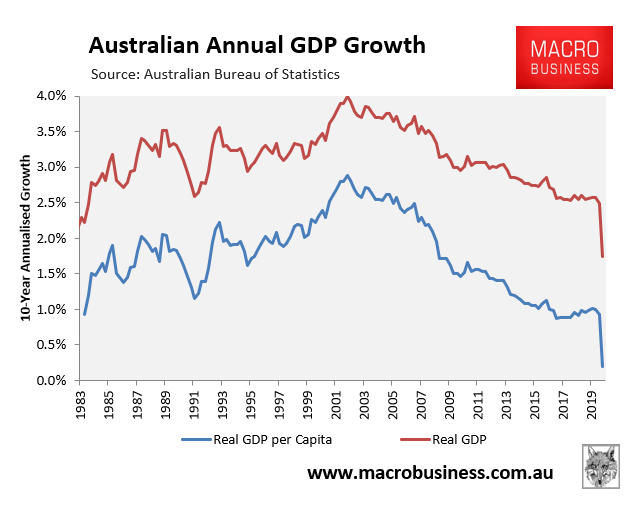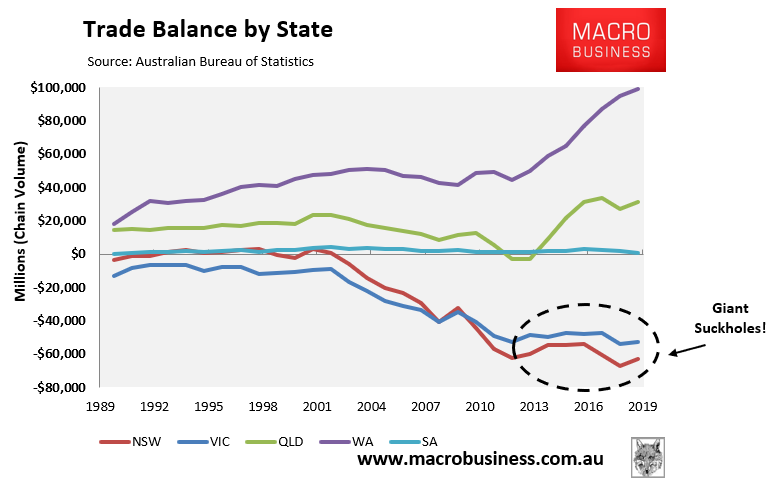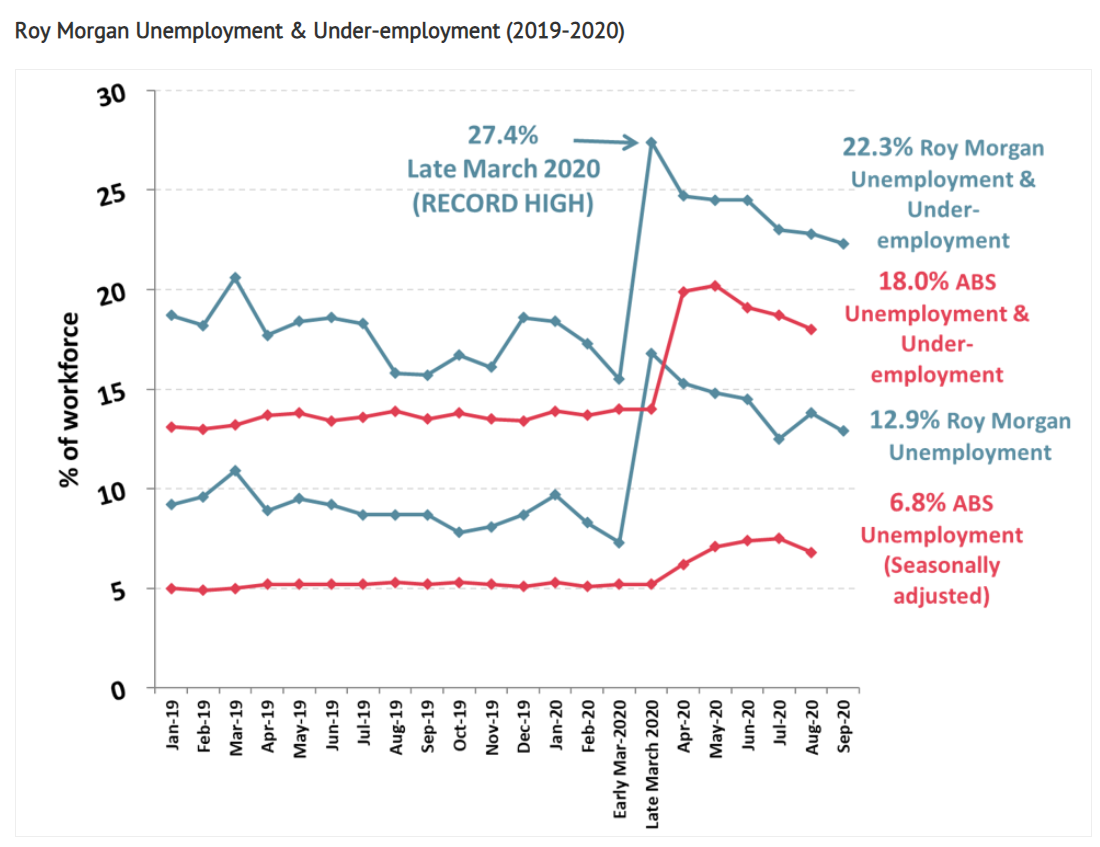The Conversation has turned into useful idiots for the capitalist elites, publishing a blatant propaganda puff piece entitled “We need to restart immigration quickly to drive economic growth”.
Let’s quickly examine the article’s main arguments for rebooting mass immigration:
Faced with a difficult economic recovery from the COVID-19 pandemic, Australia needs to act quickly with creative solutions to reestablish immigration into the country, even before a potential vaccine is found.
Over the past two decades, population growth has been an important driver of Australia’s economic growth. Immigration is the largest component of this, comprising about 64% of our population growth in 2016-17 (with the rest coming from natural increase)…
Why immigration is so vital to the economy…
First, as mentioned before, immigration growth drives economic growth. And a return to over 3% economic growth without immigration seems unlikely. When we take into consideration lower fertility rates during the pandemic, such growth is even less likely.
Lower immigration has a real effect on GDP…
Sure, more inputs in people equals more outputs in GDP. So what? Any first year economics student would tell you that it is real per capita GDP that matters, and on this front Australia’s growth performance was dismal even before COVID-19 hit:

Back to the useful idiots:
Second, the continued border closure affects our key exports, in particular international student arrivals. Total exports are predicted to fall 9% in the next year, while net exports are expected to shave 1 percentage point from GDP growth in 2021-22. International student migration and tourism make up a large part of these exports.
What about imports? Notice below how our two biggest migrant magnets of Sydney an Melbourne drove gigantic trade deficits as immigration surged?

Basically, all the extra migrants that flooded into these two cities barely lifted exports, since these cities don’t actually produce much that is tradeable. By contrast, imports skyrocketed via more purchases of consumer goods like flat screen TVs, cars, furniture, etc. These net imports must be paid for, either by increasing the nation’s debt or via selling-off the nation’s assets. We’ve been doing both.
Moreover, a large chunk of so-called education ‘exports’ aren’t genuine exports at all, since the ABS erroneously counts income earnt and spent in Australia by international students as an export (see here).
This ‘export’ farce was highlighted by a recent survey from University of Technology Sydney (UTS), which revealed that a huge number of international students have become destitute and unable to pay their living costs and/or tuition fees due to losing their paid employment. As such, they demanded taxpayer welfare.
The world has 7.6 billion people. We don’t need to import them to sell to them. This is not what smart countries do.
Back to the useful idiots:
Third, lower immigration rates affect levels of consumption. With one million fewer people entering Australia this year, there will be less demand for services and housing. This is leading to urgent calls for a return to immigration from within the construction sector.
Just like real GDP, who cares? Australians are more than just consumption units to feed the property industry and capitalists. Fewer people arriving will take the pressure off housing and infrastructure, improving living standards.
Back to the useful idiots:
Fourth, lower immigration rates may cause critical problems for the labour market in certain industries. Much of the horticulture and agriculture sector, for instance, was previously supported by working holiday makers. Farmers are now desperate for assistance, with a projected labour shortfall for summer harvests estimated to be 26,000 workers.
Attempts to mobilise Australian workers into these jobs have been largely unsuccessful, in part due to the low wages…
Real unemployment and underemployment are sky high in Australia:
Flooding an already oversupplied labour market with low-paid migrants will merely worsen the unemployment queues and drive wage growth down even further. It would be a disaster for Australia’s working class, while enriching the capitalist elites by growing the consumer base and lowering their wage costs.
Back to the useful idiots:
Fifth, fewer immigrants results in fewer people of working age contributing to the tax base. Many immigrants are generally under 45 and are here to work — either in skilled jobs or on working holiday visas. Losing large numbers of them means fewer people of working age in the population.
Of course, this assumes these people would be working during COVID-19. Research suggests temporary migrants are experiencing high rates of unemployment and homelessness during the pandemic, meaning they may not be working and contributing taxes as they normally would.
Importing more migrants to solve a fake population ageing problem is the equivalent of ‘can-kick economics’, because today’s migrants will also grow old, thus creating further ageing problems in 40 year’s time. Some will also bring in older family members.
Following on from my point above, increasing immigration will also create a bigger labour supply gap, resulting in higher unemployment and lower wages.
The key to Australia’s economic recovery rests in boosting productivity supplemented by improving labour force participation.
Lower population growth will reduce one of the major drags on Australia’s productivity: rising infrastructure bottlenecks and congestion. It would lower the Australian dollar (other things equal), rebalancing the economy away from ponzi growth towards productive tradeable growth. It would help to lift wages. And it would improve Australia’s current account, since Australia would import far less and the nation’s mineral wealth (and exports) would be shared among less people.
The reality is that mass immigration promotes ‘dumb’ growth, concentrated in urbanisation and household debt, and associated sectors benefit (think Big Property, Big Retail and banking). It benefits a small number of wealthy elites over the general population, increasing inequality.
Mass immigration comes with great, largely hidden public costs, such as congestion of public infrastructure and facilities paid for by existing residents. That is, the benefits of immigration are often privatised and the costs are often socialised.
Productivity enhancement and competitiveness is a far better economic model over the long run as it lower debts while boosting incomes per capita.
Again, the world has 7.6 billion people. We don’t need to import them to sell to them.
In summary, returning to the mass immigration ‘Big Australia’ policy post COVID will only further stifle productivity, worsen the unemployment queues and further depress wages, smashing Australia’s working class.
The Conversation should be ashamed of itself for publishing such blatant propaganda. The furious response from readers in the comments section speaks volumes.


